As a little boy growing up, cassava farine was something of an acquired taste for me. First, it was dry, really dry; Second, it wasn’t much on the taste buds either…. Dry and no taste didn’t work for me as a child. But soon enough there was a work around…Milk and Sugar. We would add sugar and maybe some full cream powdered Klim milk and have a go at it and it really wasn’t bad. So much so, that that was the best way I could ever dream of eating Cassava Farine when I was young.
Still as a boy I always thought it was a dish that it came from St Vincent. I still have no idea of how that meme slipped into my mind but schemas change with new information. The information is different now knowing that cassava farine was also made a lot in Trinidad and Tobago.
From the fishing villages to the countryside, this was a staple dish along with other “cassava dishes”. Heralding a far cry from our Amerindian Heritage on the island, now I feel proud to be part and parcel of this dish in my trini cooking culture. Cassava has been and will continue to be “survival food” for many growing up on the island including myself. It is hardy and when prepared as farine lasts for a long time if stored properly.
Maybe that’s why the Amerindians perfected this way of preserving cassava for times of hardship when food was scarce. Even as I write we have some cassava farine from last year that we got from a friend from Tobago. And, to my surprise it is still good to eat. Wow!
Anyhow, if you never knew how cassava farine was made here’s your chance to read about the process and if you’re so inspired, try the recipe and make some for yourself. The process of making farine isn’t that challenging but takes some time, heat, patience, and some hot sun to complete.
So take your time, read through the steps and execute. As you have some of your farine when you’re finished, don’t forget to thank our ancestors that have passed this technique on to generations here in Trinidad and Tobago and the rest of the Caribbean. Enjoy.
CASSAVA FARINE
2 lbs cassava, grated finely
2tsp salt
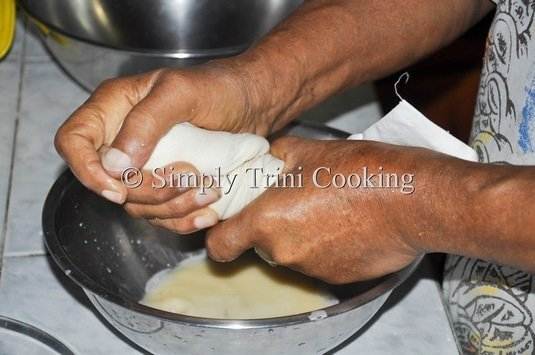 Place in a cloth and squeeze out the water.
Place in a cloth and squeeze out the water.
 Rub between your hands to make fine crumbs. Add the salt and mix.
Rub between your hands to make fine crumbs. Add the salt and mix.
 Spread a cloth and place the cassava to dry in the hot sun for at least 3 hours.
Spread a cloth and place the cassava to dry in the hot sun for at least 3 hours.
 Parch over a low fire stirring continuously until golden. Allow to cool.
Parch over a low fire stirring continuously until golden. Allow to cool.
Store in an airtight container in a cool dry place. Yields 2 cups.
 Well, here my wife is having her cassava farine with some milk and sugar just like I told you. Yummy!
Well, here my wife is having her cassava farine with some milk and sugar just like I told you. Yummy!
Hope you liked my cassava farine recipe, see you soon.
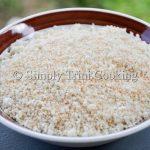
Cassava Farine
Ingredients
- 2 lbs cassava grated finely
- 2 tsp salt
Instructions
- Peel and grate the cassava.
- Place in a cloth and squeeze out the water.
- Rub between your hands to make fine crumbs. Add the salt and mix.
- Spread a cloth and place the cassava to dry in the hot sun for at least 3 hours.
- Parch over a low fire stirring continuously until golden. Allow to cool.
- Store in an airtight container in a cool dry place.
Ah gone 🙂

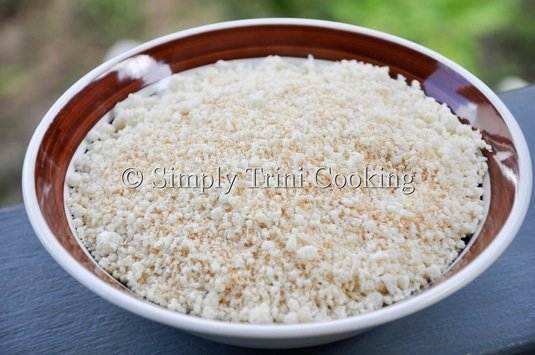
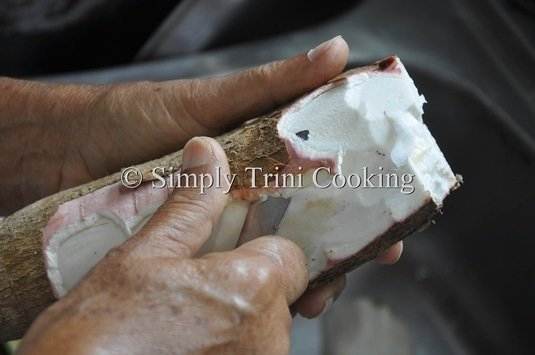
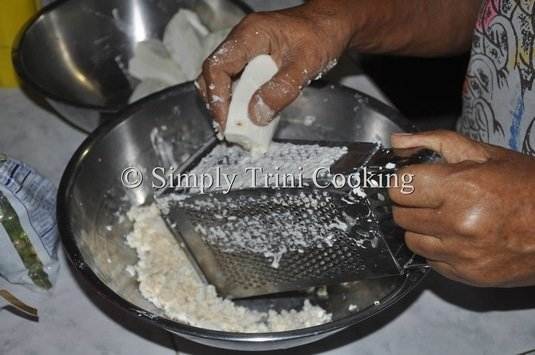

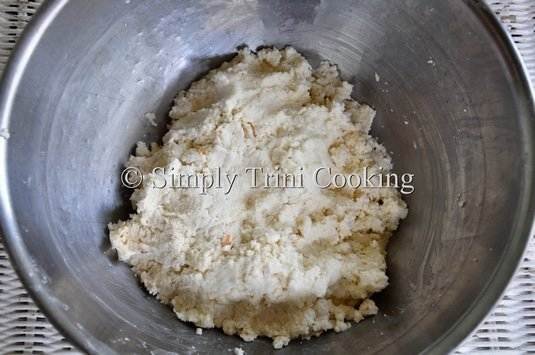
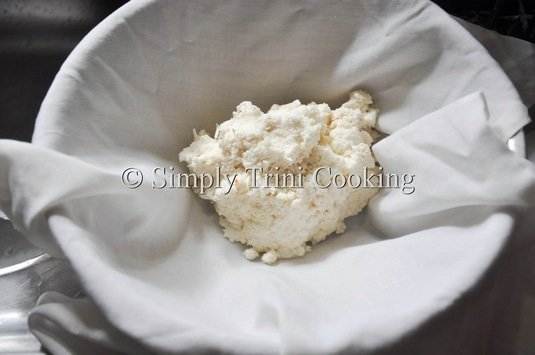
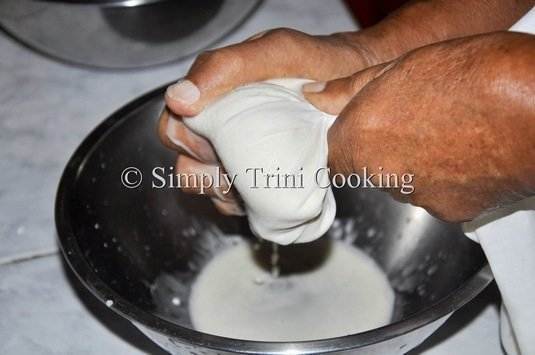
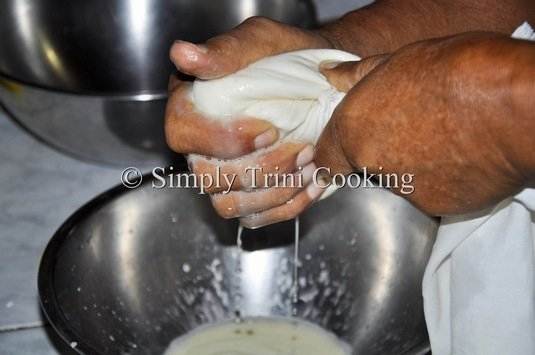

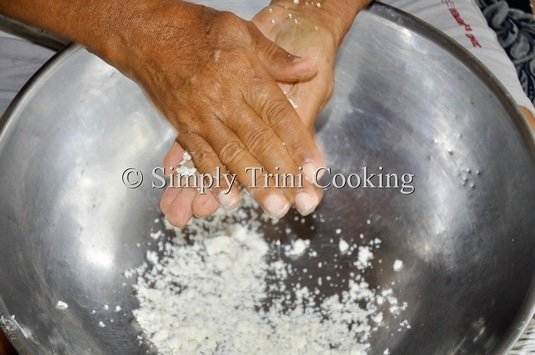
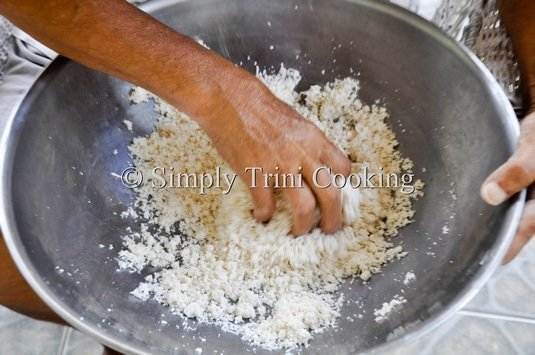
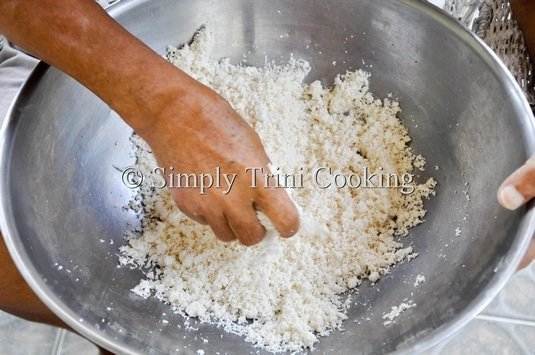
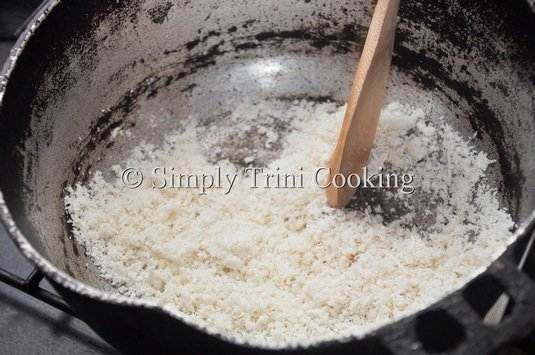
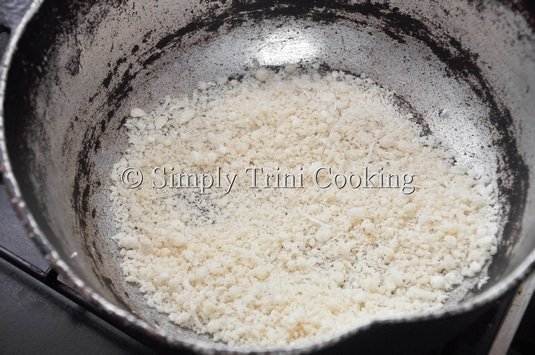
“: Cassava Farine – http://t.co/Me91xxPIDb http://t.co/KvU3FQZIly”nice
Loveee Farine but it’s really difficult to get these days….
I looooove Farine but too much trouble to make.
Thanks Felix. I bought a pack last week and I was wondering to my self if there is a recipe online. I just came on and lo and behold you have a post about same. Great work! 🙂
Wow Felix, you bring back memories there man. Farine with salt fish and avocado or with avocado alone. Man I nearly start to lick my fingers just thinking about it.
Farine and saltfish with Zaboca…Hmmm sounds like something I should try 🙂
Hi Felix,
I loved Farine as a child……….with milk and sugar it was a treat and we always had some around the house.
Thanks for this recipe, will have to try it out and see the outcome.
You never disappoint 🙂
Much loving the new Blog Look in a huge way!
I spent a lot of time in Grenada and Bequia. Love your island recipe posts.
Between your blog and Caribbean Pot I’m learning so much about our trini/caribbean food culture and @21 and studying away from home I so appreciate being able to take these recipes with me so I don’t get homesick too fast. Much love and respect 😀
Known as Gari in West Africa.
Love,love love Farine. The recipe is very timely.Thank you so much
After so many years this was posted I still benefited from the information. Thank you so much Felix! What you do is very relevant! I appreciate your work!